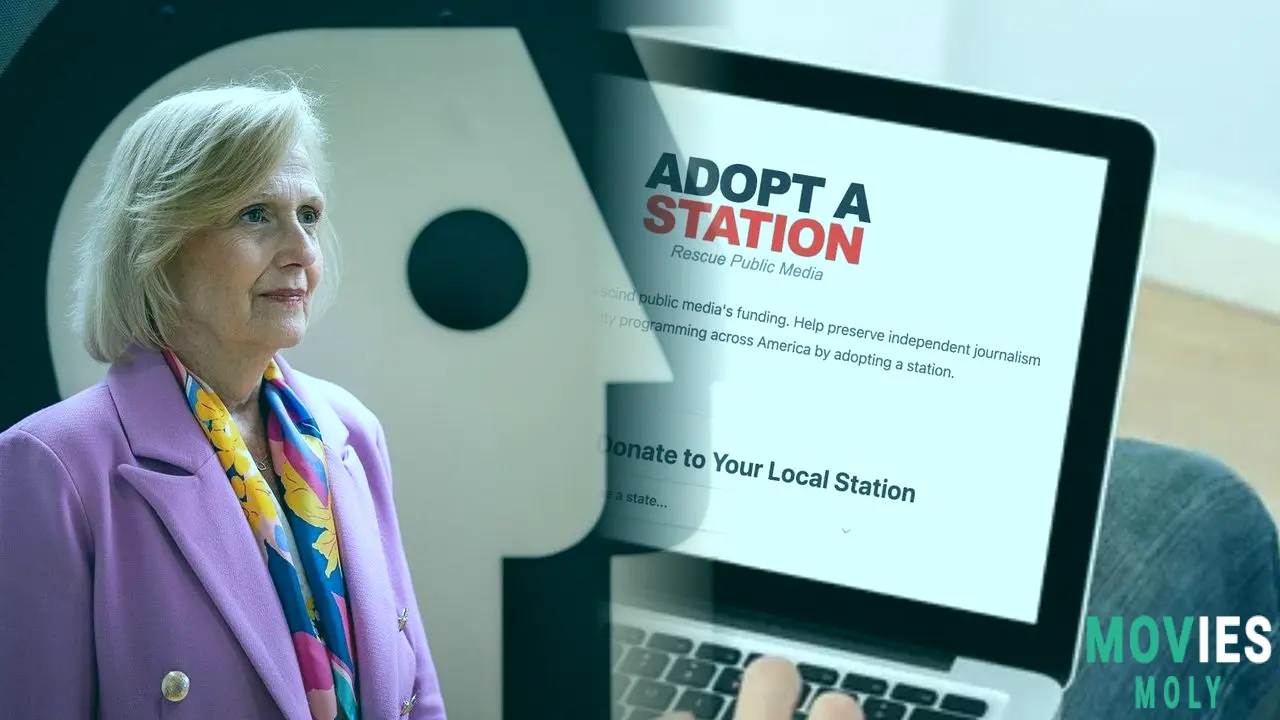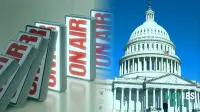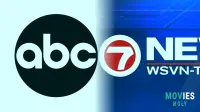Public broadcasting is in uncharted territory as President Donald Trump's administration eliminates over a billion dollars in federal funding, forcing PBS and its local affiliates to scramble for survival. Get ready for some big changes.
TL;DR- The Corporation for Public Broadcasting (CPB) has lost $1.1 billion in federal funding earmarked for 2026-2027, severely impacting PBS and NPR.
- Smaller, rural stations are most vulnerable, with some already planning to close or merge; PBS CEO Paula Kerger is working on "glide paths" for their survival.
- National programming will shift: PBS NewsHour, Nova, Nature, and Great Performances are prioritized, while American Experience is going on hiatus.
A Shockwave Through Public Broadcasting: Unpacking the Unprecedented Cuts
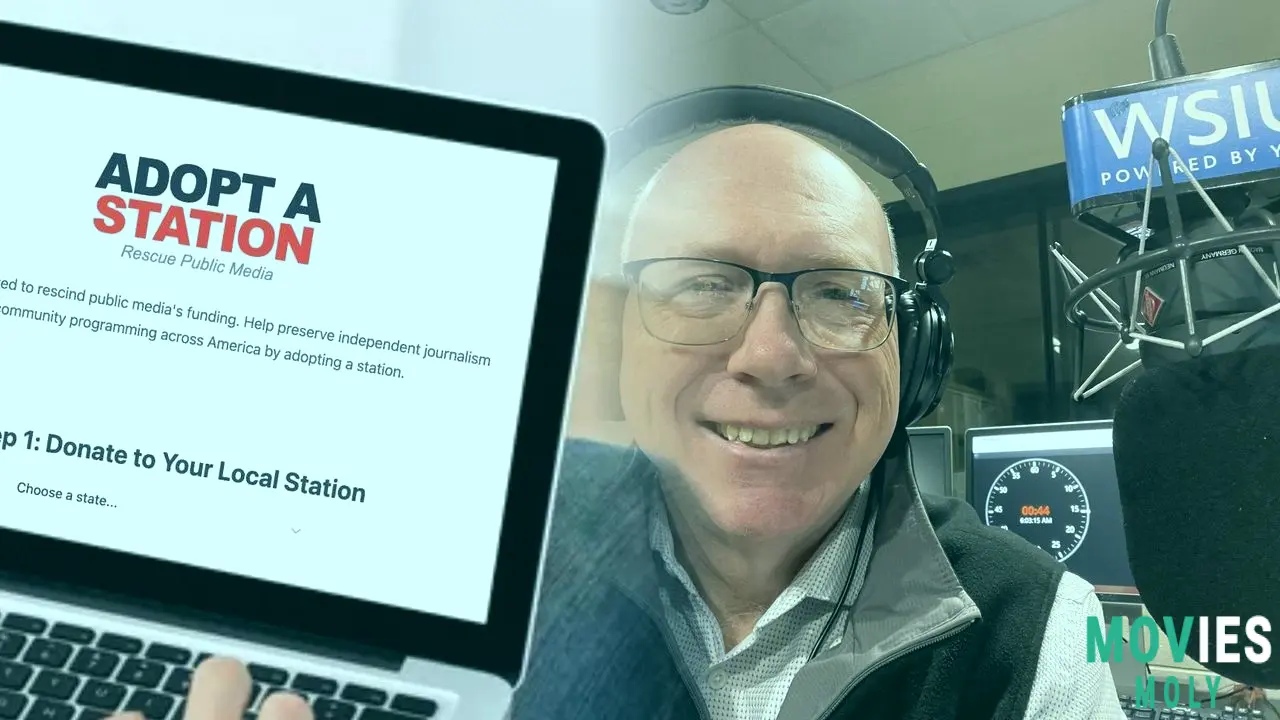
Alright, let's talk about something big that's shaking up the world of public broadcasting. If you're a fan of quality programming, local news, or educational content, you need to know what's going on at PBS and its sister stations. Simply put, the Public Broadcasting Service (PBS) and its affiliates, including NPR, are facing an existential crisis after President Donald Trump's administration signed a rescission bill in July, effectively stripping the Corporation for Public Broadcasting (CPB) of a staggering $1.1 billion in federal funding that was set aside for 2026 and 2027. This isn't just a minor budget tweak; it's a monumental shift that kicked in on October 1, marking the first time since 1967 that public media stations are operating without federal support. This has left PBS president and CEO Paula Kerger in a "race against time" as she works to navigate these choppy waters.
The CPB, which is the government-backed organization that has historically funded both national PBS/NPR and local stations, is basically being "demolished," as some reports put it. With November looming – the month when these stations typically receive their crucial annual financial grants – the reality of these cuts is hitting hard. The ripple effect is already visible across the country, from major national programming decisions to the very real threat of local stations going dark. Many of these local outlets, especially in rural areas, serve as vital news sources, making their potential closure an even bigger concern for communities.
How the Massive Federal Funding Cutbacks Are Playing Out
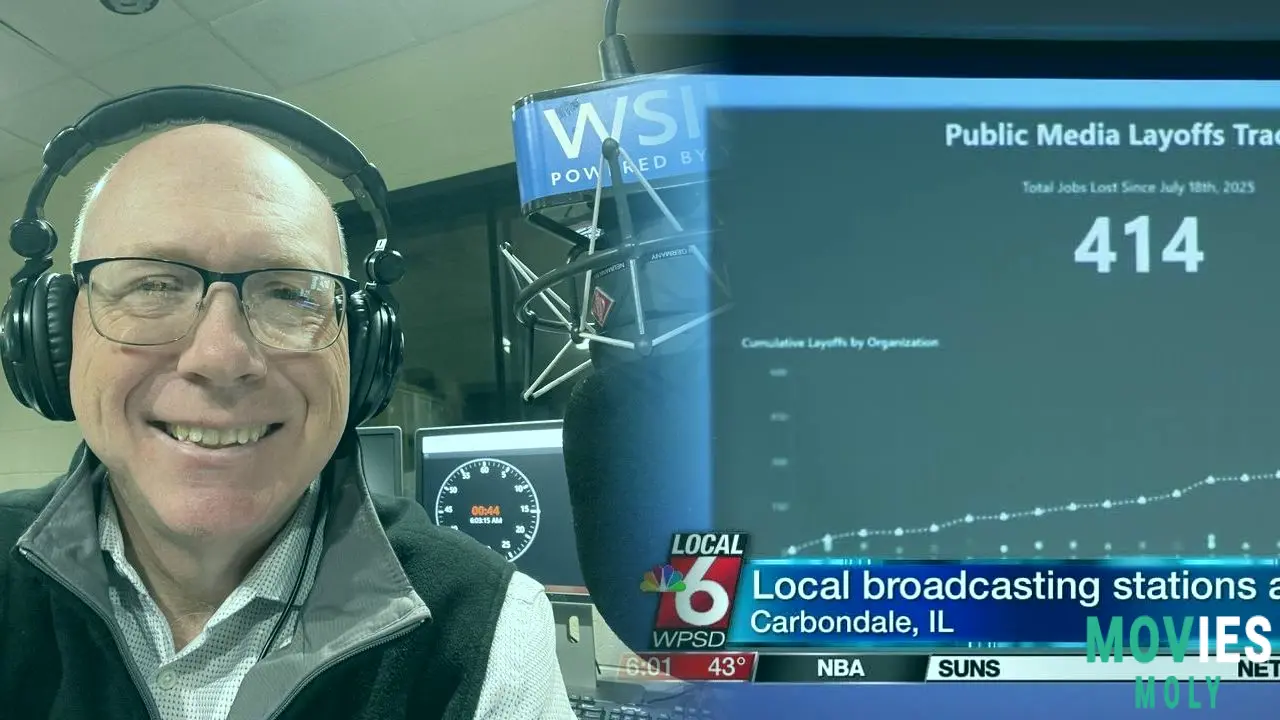
The numbers here are pretty stark. That $1.1 billion was initially earmarked for the 2026 and 2027 fiscal years. The abrupt removal of these funds means stations now have to find ways to cover a massive financial gap, and fast. The Corporation for Public Broadcasting itself has announced it will cease operating later this year, a development many in public media expected after the July vote to defund. It's important to clarify that CPB closing doesn't mean NPR or WXPR (or any specific local station) is closing, but it does remove a foundational funding pillar that has supported public media for decades.
For context, President Trump's administration cited reasons like "the media landscape is filled with abundant, diverse, and innovative news options" and claimed that CPB "fails to abide by [impartiality] principles to the extent it subsidizes NPR and PBS." This rationale has been met with strong disagreement from public media leaders who emphasize their role in providing trusted, unbiased information.
Local Stations on the Brink: A Looming Threat to Community Voices
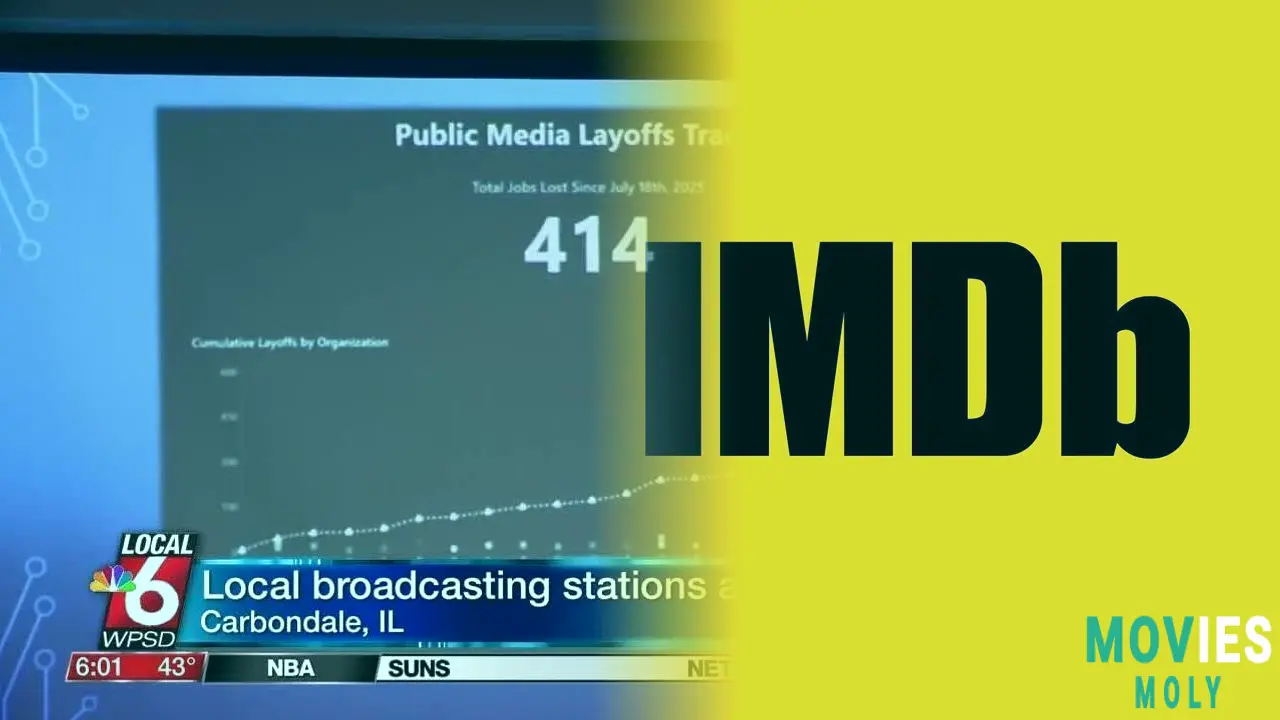
While the national headlines focus on PBS, the real impact is often felt most acutely at the local level. Paula Kerger has openly stated her biggest worry is for "the most vulnerable stations," many of which are the sole primary news outlets in their markets. These smaller, often rural, stations depend heavily on federal funds. Without that support, many are facing unthinkable choices.
Here’s a snapshot of what’s happening on the ground:
- New Jersey PBS: Has already announced that its stations are likely to go dark next year.
- Penn State University's WPSU: The university's Board of Trustees decided to pull the plug after 60 years. There's a glimmer of hope that Philadelphia pubcaster WHYY might acquire it, but its future remains uncertain.
- WXPR (Wisconsin): This station is grappling with an immediate annual revenue loss of approximately $171,000. Fiscal Year 2026, which started October 1 for them, is their first in over 40 years without CPB funding. They've already restructured staff roles and are operating with their smallest team in two decades, while committing to maintaining service quality.
- WSIU-FM and WSIU-TV (Southern Illinois): Station Manager Jeff Williams reported a combined loss of $1.4 million in CPB funding ($1.2 million for TV, $202,000 for radio). Rural stations like WSIU find it significantly harder to raise equivalent funds compared to larger metropolitan areas. Williams noted, "It’s a little more difficult to raise that kind of money in Southern Illinois, as opposed to Chicago or larger metropolitan areas, so it is a hit.”
- KRBD (Southeast Alaska): This five-person NPR station lost nearly 40% of its funding, an enormous blow for a station serving roughly 20,000 people in small communities. General Manager Mike Gates highlighted their critical role in informing communities during natural disasters. An emergency fundraiser only managed to recoup about half of what was lost.
- KOTZ (Kotzebue, Alaska): Another NPR station in a remote Alaskan region, KOTZ, saw 41% of its funding from the government disappear. Desiree Hagen, the sole reporter and news director, confirmed they've had to cut programming. These stations are lifelines, especially in areas with significant Alaskan Native populations (KOTZ serves a region that is about 75% Alaskan Native).
The situation isn't just about losing entertainment; it's about losing essential information infrastructure, especially where traditional news outlets are scarce. The Public Media Company predicts that 78 public radio organizations and 37 public television organizations, totaling 90 stations, are at risk of closing.
PBS's Game Plan: How They're Battling to Keep the Lights On
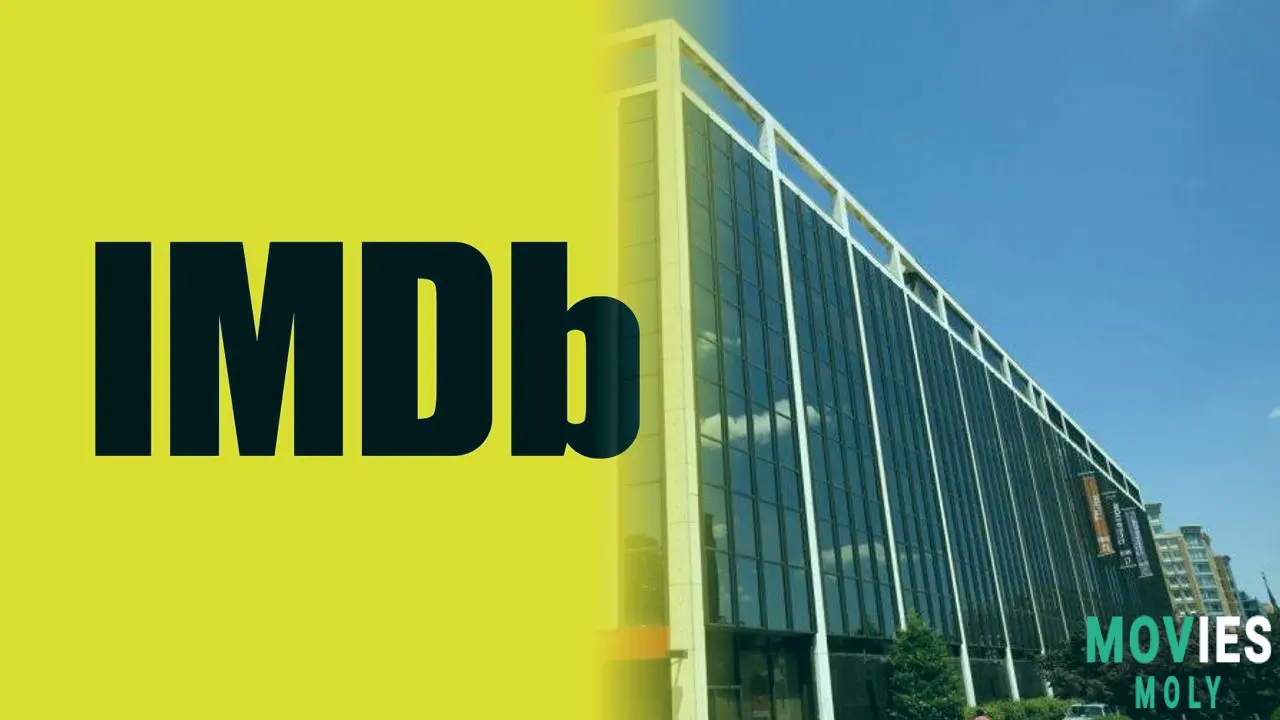
Facing this unprecedented challenge, PBS and its leadership are scrambling to come up with solutions. Paula Kerger is focusing on creating a "glide path" for the most vulnerable stations, hoping to secure enough transitional funding for a couple of years so they can explore options like consolidation or mergers. This could mean stations coming together in shared agreements to continue local media presence, or adjacent stations merging to serve a larger market.
Kerger understands that not all stations will make it, admitting, "And then I think there will be some that will find this a bridge too far and will decide not to continue."
Internal Adjustments and Workforce Impacts
To cope, PBS itself has already made significant internal adjustments. They've cut the dues they require from member stations, trying to ease the burden on local affiliates. However, this also means less money for PBS's own operations. The broadcaster recently announced it would lay off around 15% of its workforce, with PBS Kids programming operations being particularly hard hit after the U.S. Department of Education eliminated the CPB’s "Ready to Learn" grant in May.
Seeking New Financial Lifelines
Beyond internal cuts, Kerger is actively working to raise money through the nonprofit PBS Foundation. This includes securing funds for programs that PBS directly funds or those produced by major partner stations like WGBH Boston, WNET New York, and WETA Washington. The hope is that philanthropic support can partially offset the massive federal deficit.
"Some of the smaller stations are looking at coming together in some sort of shared agreement, which would change the way they operate, but would keep local media in communities around the country. I think that’s a really good model."
— Paula Kerger, PBS President and CEOProgramming Under Pressure: What Will You Still Get to Watch?
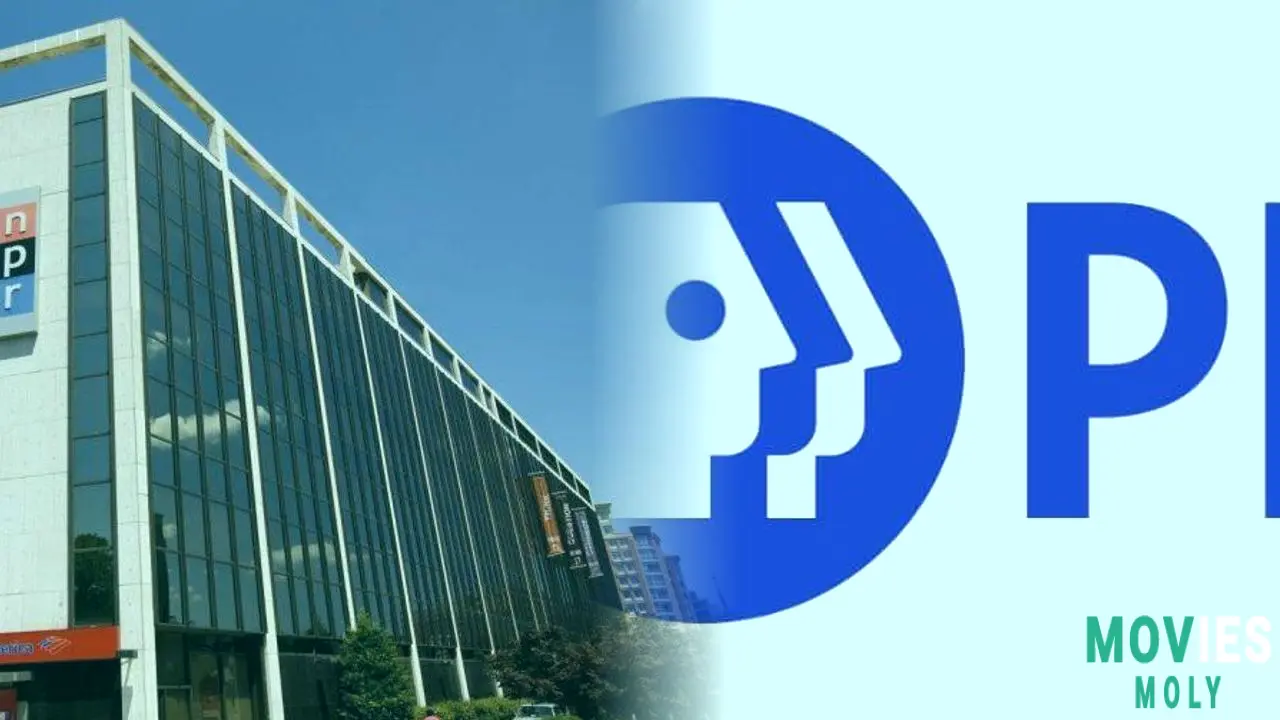
It's natural to wonder what these cuts mean for the shows you love. Kerger has been clear about programming priorities. "Obviously, the first priority is 'PBS NewsHour,' because that’s an ongoing news operation where you’re burning through money all the time," she stated. Other major series that previously benefited from CPB support, such as Nova, Nature, and Great Performances, are also high on the list to continue.
However, some beloved shows won't be as lucky, at least for now. The long-running and acclaimed series American Experience, known for its deep dives into U.S. history, is set to go on hiatus after its two-part Kissinger series airs at the end of this month. Executive producer Cameo George confirmed the impact: "By the end of the year, there will be no more 'American Experience' staff. There will be no new films." While PBS plans to rebroadcast episodes from its library that align with the U.S.'s 250th anniversary next year, the future of new productions for the series is grim. This also means viewers might see more repeats of classic signature programs like Ken Burns’ The Civil War to make up for budget deficits. As Kerger put it, "With some series, we’re going to potentially have fewer episodes and maybe leverage a little deeper off of our library."
The Political Firestorm and Defending Editorial Integrity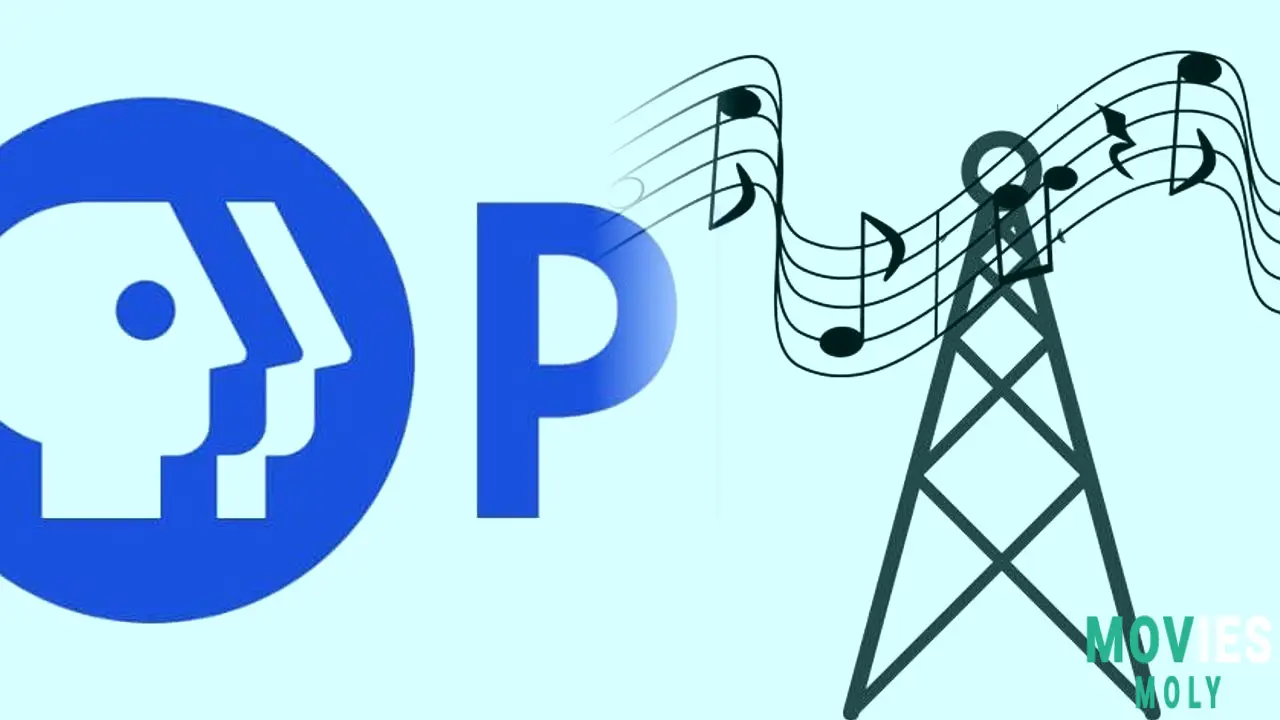
The defunding wasn't just a quiet budget adjustment; it came wrapped in political accusations. Beyond the administration's claims of impartiality issues, PBS has been under fire on multiple fronts this year. FCC Chairman Brendan Carr sent a letter accusing the pubcaster of running ads and threatening defunding, which was followed by an FCC inquiry. Rep. Marjorie Taylor Greene (R-Ga.) publicly accused PBS and NPR of being "radical left-wing echo chambers" during a House subcommittee hearing. The defunding of kids services and the removal of Democratic members from the CPB board further intensified the political pressure.
Some filmmakers even feared self-censorship. Mark Levin, director of the American Experience installment "Hard Hat Riot," revealed he was asked to remove a politically charged Ronald Reagan quote ("we will make America great again") from his film, with concerns it "might not get on the air." (Cameo George, however, stated it was a "creative decision, not a political one.")
Paula Kerger has firmly pushed back against these claims, emphasizing PBS's commitment to journalistic integrity. "They’ve already taken away our funding. I think if there was a risk of that, you would have seen it before, which we obviously did not do… I just feel like we have been buffeted through this entire year, and we have not held back from the programs that we put forward," she said. She highlighted programs like Frontline's "very fair and very honest assessment of the first 100 Days of the Trump administration" and NewsHour's continued quality journalism. Kerger remains resolute, stating that giving up news programming would be "totally against our mission" and that "people are relying on us even more for information that they can trust."
Rallying the Troops: Community and Philanthropic Support EffortsIn the face of these challenges, various groups are stepping up to help public media survive. It's a testament to the value many Americans place on these services.
Adopt-A-Station: A Grassroots Solution
One innovative effort is "Adopt-A-Station," a simple one-page website created by Alex Curley, a former public media producer and analyst. Launched in July, it aims to connect potential donors directly with the public media stations most vulnerable to closing. Curley, who has extensively analyzed nonprofit finances, estimates that 15% of all public media stations are at risk, with many serving Indigenous or Black communities, or remote areas in U.S. Territories and the West, showing the highest dependence on federal funding (some losing over 70-90% of their revenue). The site has already seen impressive engagement, with 40,000 visitors in its first month and about 20% clicking through to donate to stations losing 50% or more of their revenue. For example, KTNA in Talkeetna, Alaska, saw 83 new donors from the site, with 16 becoming monthly contributors.
Major Philanthropic and Emergency Aid
Beyond individual efforts, significant financial pledges are emerging:
- A group of well-known foundations has committed $36.5 million to public media.
- Seven philanthropic organizations have pledged an additional $37 million to fuel local public media.
- NPR is providing up to $8 million in emergency rate relief to its hardest-hit member stations, offering about $50,000 per station.
- Even Bob Ross Inc. is doing its part: the company announced it will auction off 30 of the beloved artist's paintings to support small and rural public media outlets.
- GBH, PBS's largest programming producer (behind Frontline, NOVA, Antiques Roadshow), launched "Fund the Future," a three-year, $225 million fundraising campaign to weather this unsteady financial period.
These efforts, combined with an uptick in donations from individuals and local businesses, are critical. However, Alex Curley warns that stations shouldn't count on sustained emergency fundraising levels and that foundational grants will become "much more important."
The Road Ahead: A New Era for Public BroadcastingPaula Kerger is realistic about the future, admitting there's "no 'white knight' that will save us." While she holds out hope that Congress might restore funding in future budgets, she's also clear that PBS cannot simply wait. The focus is now on long-term sustainability through various strategic shifts: reducing real estate, carefully evaluating which shows to greenlight, refining PBS's output in the evolving media landscape, and relying more heavily on philanthropic support.
Despite the challenges, Kerger remains determined. "We have been very heartened by the fact that so many people have been stepping up," she said, referring to the surge in contributions. The goal is to "rightsize the organization so that we can operate based on the amount of resources that we have." This period marks a pivotal moment for public broadcasting, forcing it to adapt and innovate while continuing its mission to provide trusted news, educational content, and cultural programming to communities across the country.
It's a stark reminder of the enduring value of public media and the collective effort required to keep it alive in an increasingly complex and polarized information environment.
FAQ: Your Burning Questions About PBS Funding Cuts Answered1. What exactly happened to PBS's funding?
In July, President Donald Trump signed a bill that rescinded $1.1 billion in federal funding previously earmarked for the Corporation for Public Broadcasting (CPB) for the fiscal years 2026 and 2027. This means as of October 1, 2025, public broadcasting stations are operating without federal support for the first time in over 50 years.
2. Are all PBS and NPR stations closing down?
No, not all stations are closing, but many are at significant risk, especially smaller, rural stations that relied heavily on federal funds. Some, like New Jersey PBS and Penn State’s WPSU, are already planning to shut down or are in a precarious position. Many are making staff cuts, reducing programming, or seeking mergers.
3. Will my favorite PBS shows still be on the air?
Key news and current affairs programs like PBS NewsHour are prioritized to continue. Popular series such as Nova, Nature, and Great Performances are also being protected. However, other long-running shows like American Experience are going on hiatus, and PBS may rely more heavily on rebroadcasting content from its extensive library (e.g., Ken Burns documentaries) to fill programming gaps.
4. How can I help support my local PBS or NPR station?
Many stations are actively fundraising. You can donate directly to your local station via their website, or explore initiatives like "Adopt-A-Station" (a website connecting donors to vulnerable stations). Philanthropic organizations and even companies like Bob Ross Inc. are stepping up with major contributions, but individual donations remain crucial for long-term sustainability.
5. Why is this funding being cut now?
The Trump administration cited the belief that the media landscape is already diverse and abundant, and questioned the impartiality of public broadcasting. This aligns with broader political rhetoric that has challenged the necessity and perceived bias of federally funded media outlets.
Sources:- Variety - "PBS CEO Reveals Plan to Save Stations and Programming After Trump Killed Funding, Admits There’s No ‘White Knight That Will Save Us’" by Michael Schneider (Oct 17, 2025)
- E&P Magazine - "After Congress yanks $1.1B from CPB, a one-page site starts saving stations" by Bob Sillick (Oct 16, 2025)
- WXPR - "Funding challenges FAQ" (Oct 16, 2025)
- Paxton Media (via BLOXpad) - "In the wake of federal funding cuts to public broadcasters like PBS and NPR, rural, local stations such as WSIU-FM and WSIU-TV are adapting to a new reality." (Published Oct 16, 2025)
- AOL (via The Hill) - "Public media stations grapple with federal funding cuts amid calls for support" by Lee Ann Anderson (Oct 15, 2025)
- Symphony.org (via The Washington Post) - "Back in July, the Trump administration clawed back some $1.1 billion in funding for public broadcasting, effectively shuttering the Corporation for Public Broadcasting..." by Michael Andor Brodeur (Oct 12, 2025)

